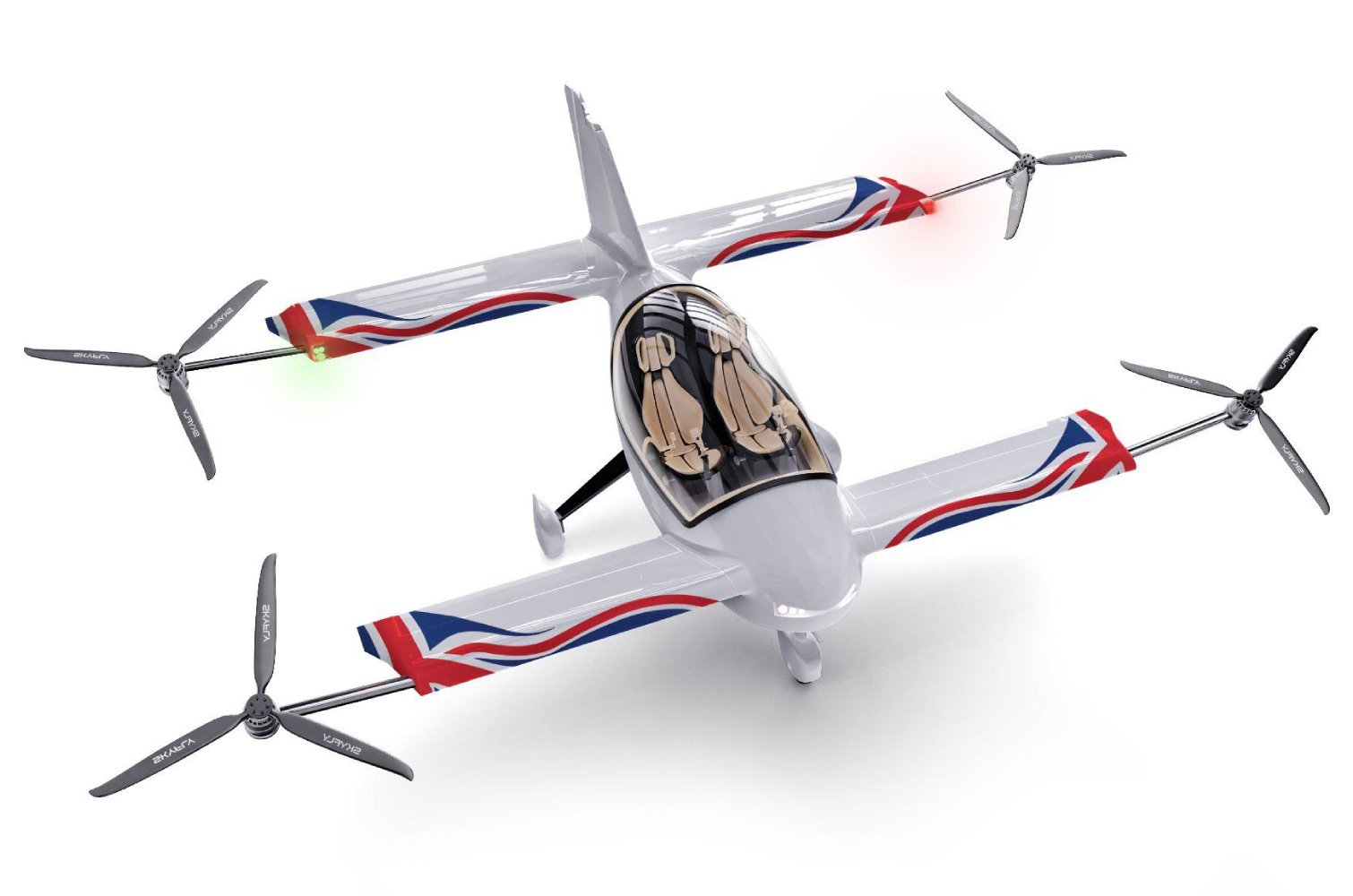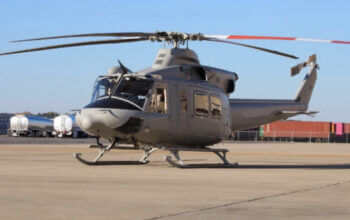
The Federal Aviation Administration is set to recognize the Axe eVTOL as a Light Sports Aircraft (LSA), as part of proposals to reform their light aircraft certification requirements.
Previously, only single-engine aircraft could be classified as LSAs. However, recognizing the part that electric aircraft will play in the future of general aviation, it’s expected the reformed rules will allow LSAs to have “any number or type of powerplants.”
The Axe has eight electric motors and four wings, providing multi-layered safety redundancy, as well as whisper-quiet operation compared to old-fashioned fossil fuel burning helicopters or airplanes.
Axe qualifies as an LSA thanks to its unique four wings giving aerodynamic lift and its fixed 45-degree angle rotors, which make it capable of operating as a normal airplane.
“It is meaningful to see the world’s leading aviation regulator, the U.S. Federal Aviation Administration encouraging and supporting sustainability and innovation for eco-friendly electric aircraft like the Axe personal eVTOL by Skyfly,” said Jaap Rademaker, CCO, Skyfly.
“The FAA’s lead will spur on other regulators across the world to make new things happen too. The Axe eVTOL is both a helicopter as well as an airplane, but much easier to fly than either of these, and with a lower environmental impact, less noise and significantly greater safety. By creating a regulatory environment in which the Axe can operate to its full potential, the FAA is taking concrete steps towards making the skies cleaner, quieter, safer and more affordable to all.
“Our customers cannot wait to cut their travel times to a quarter or less while enjoying more comfort and freedom in the skies instead of being stuck in traffic on Earth.”
Known as the Modernization of Special Airworthiness Certification (MOSAIC) reforms, the new rules recognize the importance of sustainable, efficient electric aircraft and intend to increase the suitability of such aircraft for both private use and pilot training.
Classifying the Axe eVTOL as an LSA means pilots will be able to fly the Axe using a Sport Pilot Certificate (SPC). This creates opportunities for non-pilots to qualify to fly the Axe more easily than ever before, while also enabling thousands of existing SPC pilots to fly the Axe without needing to ‘upgrade’ to a full private pilot license (PPL).
Minimum training requirements for an SPC are less than half that of a full PPL, and a PPL can typically be almost three times as expensive to obtain.
While pilots will be able to fly the Axe eVTOL by Skyfly, other eVTOL aircraft cannot yet be flown as pilots licenses worldwide are only for either fixed-wing aircraft or helicopters; there are no eVTOL licenses.
The Axe 2-seat personal eVTOL is aimed at private owners, flying themselves, and is not a commercial air taxi aimed at going into city centres for mass urban air mobility (UAM) transport. In the hover, the Axe can be flown with the same simple and stable controls as a consumer camera drone — and benefits from an autopilot and moving map as standard.
Following two years of test flying the prototype, the Skyfly team now counts seven full-time engineers as well as three contractors, led by William Brooks, and is focused on building the Axe to conduct manned test flights in December 2023. The Axe is priced from $180,000.
“I believe that the long-awaited MOSAIC regulations will enable easy and affordable travel for eco-conscious owners who otherwise have few alternatives,” said Bill Minkoff, CEO, AltiSky.
“The convenience offered by the Axe eVTOL will be a game changer for my clients who will definitely see the value of this time-travel opportunity.”
What is the Axe EVTOL?
With a fully-electric range of 100 miles, or 300 miles with an optional hybrid generator, and a cruise speed of 100 mph, the Axe by Skyfly is said to be a truly revolutionary two-seat EVTOL aircraft.
“It is designed for personal use and is as easy to fly as a consumer camera drone,” the company said in a statement.
“Thanks to its small footprint and low noise, the Axe can be kept at home and flown directly to a destination, in complete comfort and with aerial views to enjoy, without traffic jams or bumpy roads.”
By providing lift, the wings also enable a much larger range compared to “rotors-only” eVTOLs, an extra layer of safety due to its good glide performance, and a class-leading 30-50kw energy use in cruise, comparable to a Tesla.
The Axe also offers greatly increased safety compared to a helicopter, thanks to its eight-motor distributed propulsion, each with its own power supply and its glide ability arising from its four wings, which enables power-off landing. Additionally, the Axe is fitted with a ballistic parachute.
Skyfly does not aim to develop an air taxi that shuttles commercial passengers into city centres, nor is it venturing down the onerous commercial certification route, which leads to high development costs. Instead, Skyfly follows existing certification routes for private kit-built aircraft.
Unlike commercial air taxis, which require as-yet-unbuilt “vertiport” infrastructure, the Axe EVTOL can take off and land in a garden or any agricultural land where the landowner has given permission, without needing modifications or expensive infrastructure.
The Axe is not just an idea or concept, but a fully designed aircraft.
Extensive analysis and prototype testing has been carried out and manufacturing is being readied for series production. Two teams of aircraft engineers have developed the Axe as a versatile personal aircraft with strict focus on low weight and aerodynamic efficiency and performance.
Aside from generating lift from its wings, the Axe uses existing technology from proven and certified suppliers to provide key components, including the propulsion system, battery system and flight control system.
It has no rotating motor or wing elements, but instead has fixed angle rotors, saving on weight, cost, complexity and maintenance.
Brooks has designed the Axe with efficiency at its core, with the four wings giving it the highest energy efficiency. The Axe’s wings generate useful lift in forward flight, improving efficiency, range and safety, while also giving it the ability to make conventional wing-borne take-offs and landings if required, saving yet more energy.
Skyfly sees the Axe as a direct competitor to currently-available two seat airplanes or helicopters — one the company said is much easier to fly, safer, quieter and more affordable to buy, operate and maintain.
Following two years of development, CFD and CAD designing, followed by prototype flight testing, the Axe was officially launched in the summer of 2022.
In the months since then, the Axe eVTOL by Skyfly has secured dozens of orders and has attracted the attention of air mobility specialist investors. This backing allows Skyfly to push forward with its development schedule.
The strong and lightweight composite fuselage tooling for series production has meanwhile been manufactured and delivered, and with that, Skyfly is now building its first aircraft, with manned test flights due to begin December 2023. Customer deliveries follow at the end of 2024, when U.K. certification is expected.
This press release was prepared and distributed by Skyfly.









